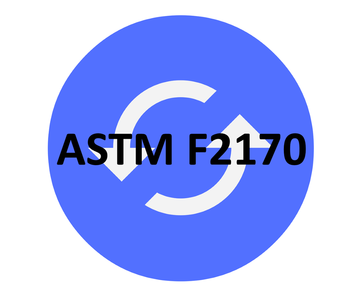|
Contributed by Eric D. Lussier If you were a frequent reader to the "Let's Fix Construction" blog, you have, or at least I hope you have, wondered where the new posts and contributions have gone. So do I.
Fourteen months removed from a monumental change to ALL of our lives, I have found myself more disconnected at times now than at any point in 2020. And that is just as the glowing light at the end of the tunnel seems to be brighter than ever. We're good to live a life unmasked IF you're vaccinated. Live concerts are returning. New cases are not the lead story on the news. A return to norm seems to be right in front of us. But, what will be the new norm? Will offices go back to full capacity? Will you ever have an employer again that questions the work from home model? Will we be more apt to jump on a Zoom to connect with someone? Will virtual events be the standard and in-person be the exception? I don't know the answers. I have struggled many times with where to bring this website and blog. The content that at one time flowed from contributors, including myself, has slowed. The energy and time to curate was getting harder and harder to find and that was before a global pandemic fundamentally changed everything we did. I, like many, hit a time of rock bottom in 2020. It turned out to be a rollercoaster of a year, and it included many highs and many lows. 2021 started much the same and I've experienced more emotions on a personal level than I anticipated after "surviving" 2020. I continue to look within, try to re-establish the groove that I found at times last year, and find it harder and harder to do so. What does all of this have to do with "Let's Fix Construction"? Well, for background, the LFC movement was never about one person or one voice. It was always about the long list of contributors, whether they were a one-time poster, or offered multiple titles. As I internalize about which direction to push the website, I know that I don't want to be a one-voice channel, nor do I want it to only be about flooring. Meanwhile, I also recognize that through the voices of myself and others, that a destination has been established here for true form and proper function with the AEC industry. As business was booming within the construction industry a few years ago, I saw firsthand how the knowledgeshare went from a giving model to almost an SEO-model. Meaning those that I relied on for words and thoughts were doing so from their own freewill, and because they wanted to give. And when time became harder to find to continue to give, priorities were shifted elsewhere - to business, to family, to living. Myself included. So, as I plot out a future for "Let's Fix Construction" that I hope looks like pre-pandemic days, I ask for advice. What would you like to see going forward on these pages, in person and on airwaves? Are you consuming more podcasts and less blog reading now? Do you still look to the written word? How are you finding your trusted advisors? Please comment below or reach out to [email protected] and I look forward to hearing from you.
13 Comments
Contributed by Jason Spangler For years now, the in situ relative humidity (RH) test for measuring the moisture condition of concrete has been shown to be the most reliable, accurate test available.
As far back as the 1960s, laboratories at the Portland Cement Association conducted controlled tests that verified the accuracy of RH testing. This research was followed by years of additional testing at Lund University in Sweden and elsewhere. In 2002, ASTM International first established the F2170 standard for conducting RH tests on concrete slabs. The research confirmed two key discoveries:
Other methods typically involve taking measurements only at the surface of the slab. As the research has found, a surface-based moisture test can’t provide an accurate measure of a slab’s true moisture condition. That’s because it doesn’t account for the moisture conditions deeper within the slab, and those conditions are typically quite different than conditions at the surface. The Standard Evolves as the Science Tells Us More The initial ASTM F2170 for in situ RH testing was established in 2002, after continuing research at Scandinavian universities in the 1990s identified the exact specifications for conducting a reliably accurate RH test—placing the test probe at 40 percent depth for slabs poured on grade or 20 percent for slabs drying from both sides. After these scientifically-validated specifications were firmly established, ASTM International published a usable standard. Until now, the ASTM F2170 standard has required a 72-hour waiting period between drilling the test holes where the RH probes are placed and taking official RH measurements. In practice, readings are often taken before the 72 hours has passed, so contractors have an idea of how things are trending. But because the official readings couldn’t be taken before 72 hours, that meant all decisions and work were basically on hold for those three days. Full stop. Yet we’ve seen how the research on the RH test method has helped to refine our understanding of how best to use it. This trend continues. In 2014, a Precision and Bias (P&B) study, commissioned by the ASTM committee, tested for differences in RH readings at various intervals within the 72-hour period. In part, the idea was to assess if it is actually necessary to wait the full 72 hours for an accurate, actionable moisture readings. |
AboutLet's Fix Construction is an avenue to offer creative solutions, separate myths from facts and erase misconceptions about the architecture, engineering and construction (AEC) industry. Check out Cherise's latest podcast
Get blog post notifications hereArchives
March 2022
Categories
All
|



 RSS Feed
RSS Feed
